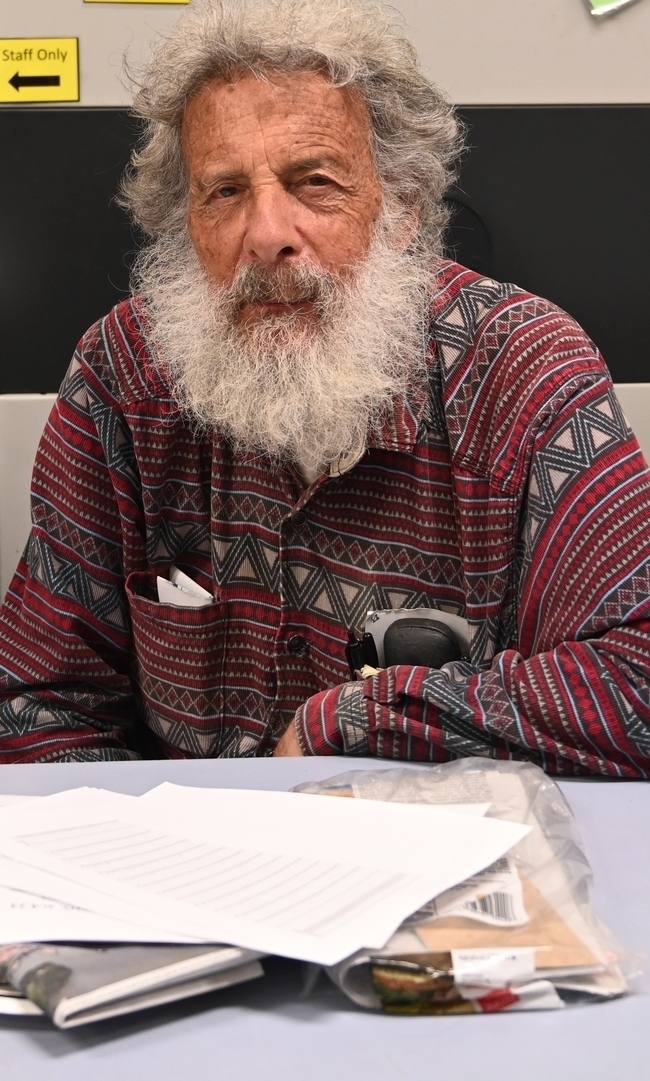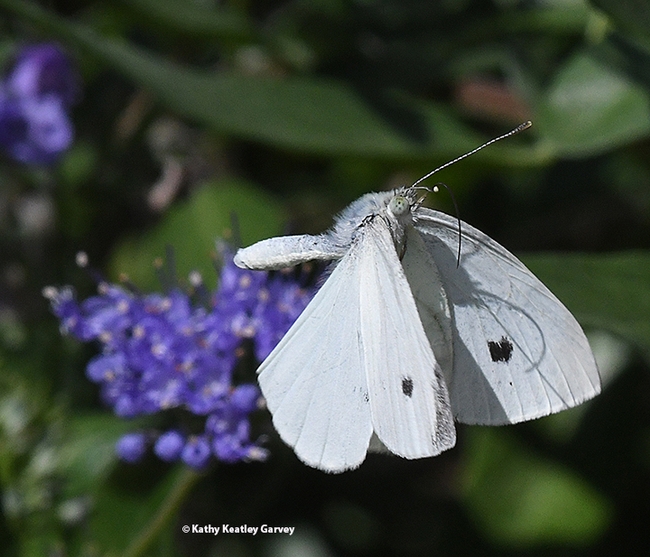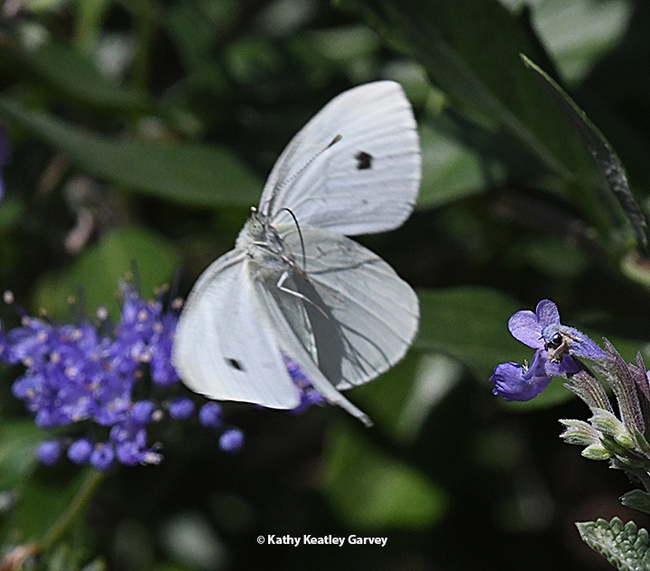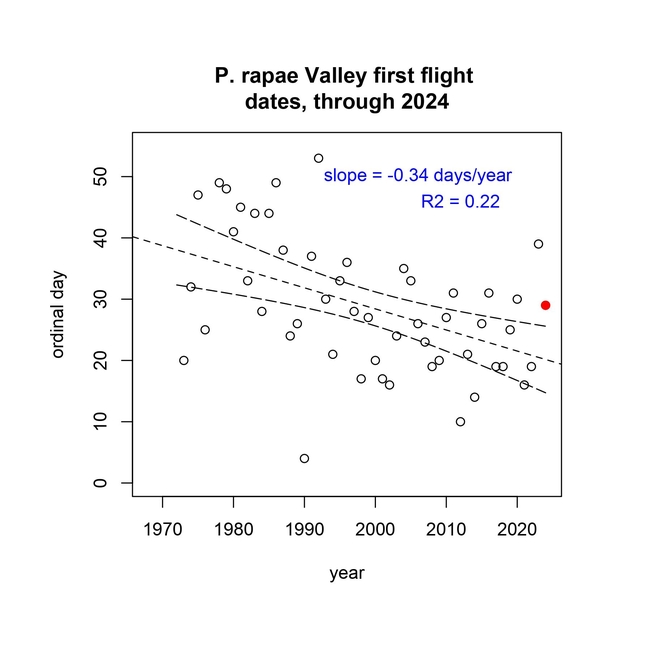
We have a winner in the annual Beer-for-a-Butterfly Contest, in which the first person to collect the first cabbage white butterfly of the year in the three-county area of Yolo, Sacramento and Solano, wins a beer.
The 2024 winner of the "Suds for a Bug" contest?
The repeat winner, UC Davis distinguished professor emeritus Art Shapiro. He has sponsored the annual contest since 1972 as part of his scientific research involving long-term studies of butterfly life cycles and climate change. He also participates in his own contest.
In its larval stage, the cabbage white butterfly, Pieris rapae, is a pest of cole crops, including cabbage, cauliflower and broccoli.
Shapiro did not actually collect the butterfly; he recorded it. But no person came forth with an eligible entry.
Shapiro spotted the cabbage white on Monday, Jan. 29 at 11:30 a.m. in West Sacramento, Yolo County, and saw the same one again at 11:40.
As he related in his posse email: “Went to West Sac bright and early, direct from breakfast and without a net. Light ground fog broke up by 9:30 a.m. and thereafter it was clear until around 2, when high, thin overcast moved in rapidly from the west. Before it clouded over, it hit 73F, with light and variable wind. Once the clouds moved in, although they were translucent, the temperature dropped quickly into the 60s. There are a few Brassica kaber (mustard) and a couple of dozen Raphanus (wild radish) in bloom, a tiny fraction of what was around last year at the end of January."
“Saw my first rapae of 2024, a male, at 11.20 a.m. and the same one again at 11.40. Then nothing until 12:20--another male, certainly a different one, 1.5 miles farther west. Nothing else seen, so 1(2) for the day.”
The emeritus professor said he learned that someone “may have gotten one yesterday (Jan. 28), location unknown, but no one came forth." He also received a report of one collected on Jan. 22 in Davis "which almost certainly hatched indoors so I'm not counting it. It was found in the person's apartment at 7 p.m., but never seen to come in from outdoors."
Shapiro, who has monitored butterfly populations in Central California since 1972, and maintains a research website at http://butterfly.ucdavis.edu/, says the point of the contest "is to get the earliest possible flight date for statistical purposes. The rules require that the animal be captured and brought in alive to be verified. That way no one can falsely claim to have seen one or misidentify something else as a cabbage white."
The contest rules include:
- It must be an adult (no caterpillars or pupae) and be captured outdoors.
- It must be brought in alive to the Bohart Museum of Entomology, located in Room 1124, Academic Surge Building, 455 Crocker Lane, UC Davis campus, during work hours, from 8 a.m. to noon, and from 1 to 5 p.m., Monday through Friday. It must include full data (exact time, date and location of the capture) and the contact information of the collector (address, phone number and/or e-mail.) Brennen Dyer will certify that it is alive and refrigerate it. (If it's collected on a weekend or holiday, it can be kept in the refrigerator for a few days--do not freeze it, Shapiro says.)
- Shapiro is the sole judge.
Brennen related no one brought a white cabbage butterfly to the Bohart Museum to compete in the contest.
P. rapae is emerging earlier and earlier as the regional climate has warmed, Shapiro says. "Since 1972, the first flight of the cabbage white butterfly has varied from Jan. 1 to Feb. 22, averaging about Jan. 20."
Shapiro has been defeated only four times and those were by UC Davis graduate students. Adam Porter won in 1983; Sherri Graves and Rick VanBuskirk each won in the late 1990s; and Jacob Montgomery in 2016. The first three were his own graduate students.
Who won in 2023? Shapiro spotted the first butterfly of 2023 at 11:22 a.m., in West Sacramento. He did not collect the butterfly but recorded it as the first of the year. No one came forth with a competitor.
Matthew Forister, the Foundation Professor, Trevor J. McMinn Endowed Research Professor in Biology at the University of Nevada, Reno, collaborates with Shapiro and annually creates a graph, using statistics from 1972 to the current year. "The long-term linear pattern continues, although recent years have been less steep (the year slope was -0.45 six years ago; is -0.34 now)," he related. Forister received his PhD in ecology from UC Davis in 2004, studying with Shapiro.
Attached Images:

The cabbage white butterfly, Pieris rapae, is white with small black dots on its wings. (Photo by Kathy Keatley Garvey)

A cabbage white butterfly nectaring on a catmint in Vacaville. (Photo by Kathy Keatley Garvey)

A statistics chart of the first flight of the cabbage white butterfly, a work created by Matthew Forister of the University of Nevada. He collaborates with his former professor, Art Shapiro, UC Davis distinguished professor emeritus.